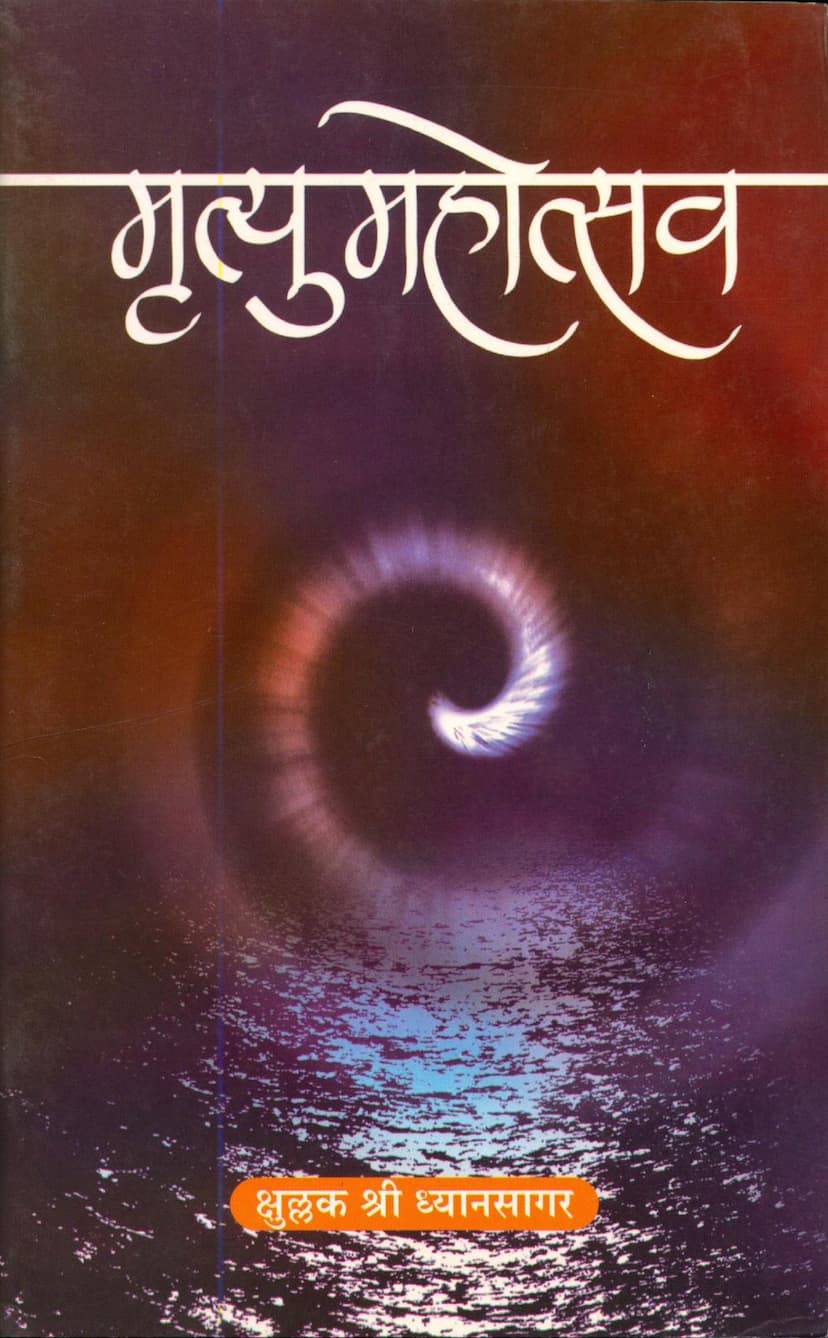Mrutyu Mahotsav
Added to library: September 2, 2025

Summary
Here's a comprehensive summary of the Jain text "Mrutyu Mahotsav" (The Festival of Death), based on the provided pages:
Book Title: Mrutyu Mahotsav (मृत्यु- महोत्सव) Author: Kshullaka Dhyansagar Muni (क्षुल्लक श्री ध्यानसागर) Publisher: Prakash C Shah (प्रकाश सी. शाह) Catalog Link: https://jainqq.org/explore/007251/1
Overview:
"Mrutyu Mahotsav" is a Jain text that reinterprets the concept of death, not as an end to be feared, but as a "Festival of Death" (Mrutyu Mahotsav). It aims to transform the fearful perception of death into a joyful and auspicious occasion through the principles of Jain philosophy, particularly focusing on Sallekhana (the Jain practice of voluntary, peaceful fasting unto death). The book is presented as a compilation of discourses by Kshullaka Dhyansagarji, a disciple of Acharya Shri Vidyasagarji Maharaj.
Key Themes and Concepts:
-
Reconceptualizing Death: The central theme is to view death as a natural, inevitable, and even celebratory event, rather than a dreaded tragedy. It's presented as a transition, a "journey" between the birth and death of the soul, and a gateway to a new life or liberation.
-
The Role of Sallekhana: The book extensively discusses Sallekhana, the Jain practice of gradually reducing one's intake of food and worldly attachments, culminating in a peaceful and voluntary fast until death. This is portrayed as the Jain way to face death with equanimity and spiritual preparedness.
-
Distinction from Suicide: A significant portion of the text is dedicated to differentiating Sallekhana from suicide. It emphasizes that Sallekhana is undertaken with a clear, calm, and spiritual intent to overcome attachment and achieve a higher spiritual state, whereas suicide is driven by desperation, despair, or mental imbalance. The intent (Abhipraya) is presented as the crucial differentiator.
-
The Soul vs. The Body: The text consistently highlights the eternal and unchanging nature of the soul (Atman) in contrast to the impermanent and decaying nature of the body. The body is described as a temporary vessel, a "cage," which the soul inhabits and eventually leaves. This understanding helps detach from the fear of bodily death.
-
The "Festival" Aspect: The "Mahotsav" (Festival) aspect is explained by the spiritual joy and liberation that comes from a well-prepared, conscious departure from the physical body. It's a celebration of freedom from the cycle of birth and death (samsara) or a transition to a better rebirth.
-
The Teachings of Acharya Vidyasagarji: The book emphasizes that these teachings originate from Kshullaka Dhyansagarji, who is a direct disciple of the highly revered Acharya Shri Vidyasagarji Maharaj. This lends significant spiritual authority to the content.
-
Types of Death: The text outlines various classifications of death found in Jain scriptures, ranging from the highest (Pandita-Pandita Marana, leading to liberation) to the lowest (Bala-Bala Marana, leading to unfavorable rebirths). It explains how intentional spiritual practice, like Sallekhana, influences the type of death and subsequent rebirth.
-
Overcoming Attachment and Desire: A core message is the necessity of renouncing worldly attachments, desires, and aversions (kashayas) as one approaches death. This detachment is crucial for achieving a peaceful and auspicious end.
-
The Value of Present Moment: The book encourages living in the present moment, detached from past regrets and future anxieties, especially in the context of approaching death.
-
Spiritual Preparation: It stresses the importance of continuous spiritual practice, devotion, contemplation, and adherence to vows (vratas) throughout life as the best preparation for a dignified death.
Structure and Content Highlights:
- Introduction: The initial pages introduce the book, the author, and the context of its publication, often with dedications and acknowledgments. The preface by Varsha Prakash Shah highlights the profound impact of Kshullaka Dhyansagarji's teachings and the family's gratitude.
- Philosophical Discourse: The core of the book consists of philosophical explanations of death, the soul, karma, and the path to liberation, often framed within the context of Jain principles.
- Sallekhana Explained: Detailed explanations of Sallekhana, its procedure, its benefits, and its distinction from other forms of ending life are provided. The text differentiates between internal and external Sallekhana.
- Poetic Verses (Shlokas): The text includes numerous verses that beautifully articulate these philosophical concepts in poetic form, often with explanations of their literal meaning (Anvayartha) and their deeper spiritual import (Antardhvani). These verses encourage a positive and spiritual outlook on death.
- Inspirational Examples: The text references the lives of great saints and ascetics who practiced Sallekhana with unwavering resolve, serving as inspirational figures for the readers.
- Compilation of Quotes: The later sections of the book (pages 54-68) are filled with a vast compilation of quotes on death from various thinkers, philosophers, religious leaders, and scriptures, both Indian and Western, reinforcing the multifaceted perspective on death and its meaning.
- Concluding Prayers and Meditations: The text includes prayers and meditative verses designed to help individuals cultivate the right mindset for facing death with peace and equanimity.
In essence, "Mrutyu Mahotsav" is a guide to understanding and embracing death as a natural part of the soul's journey, advocating for spiritual preparedness, detachment, and a positive outlook, as exemplified by the Jain practice of Sallekhana. It aims to transform the "fear of death" into a "celebration of liberation."